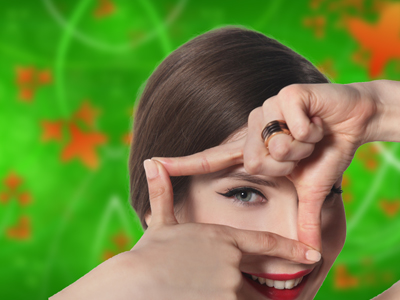Eye Examination

A full eye examination takes about 20 to 40 minutes and a general outline of an eye exam is described below:
It is of great importance to have regular eye exams by your optometrist. An eye examination should be a part of everyone’s normal health routine. This is because during your eye examination, your optometrist is the trained professional who not only tests your sight but also checks other general health issues during an eye examination. Ensuring that your sight is perfectly corrected, your optometrist provides you with comfortable sharp vision during your daily activities and therefore ensures a good quality of life. Furthermore during an eye examination, your optometrist will ensure through different tests that your eyes are healthy and that their health is preserved for the years to come.
A full eye examination is recommended at least every two years for adults and once a year for individuals who have a family history of eye diseases such as glaucoma or a family history of systemic diseases that may affect eye health such as diabetes or systemic hypertension. Your optometrist will carry out a comprehensive eye examination not only to assess your vision but also to examine the external and internal structures of your eyes. This will include checking the health of your lids and cornea, the crystalline lens, the retina at the back of the eye and the optic nerve. Consequently eye conditions like cataracts or raised intraocular pressure and ocular signs of underlying health conditions like diabetes and high blood pressure can be identified during this process. Your optometrist will ensure that everything is explained during each step of your eye exam.
In case any suspected pathological anomalies are spotted during your eye exam, your optometrist will refer you to your ophthalmologist for further investigation. Your ophthalmologist is an eye doctor (eye surgeon) and the professional who will further investigate, diagnose and provide possible treatment for any pathological anomaly which may arise.
- History and symptoms
- Refraction – vision assessment
- External and Internal eye examination
- Pupillary reflexes
- Glaucoma tests: Intraocular pressure measured, Optical field analysis
- Oculomotor tests: Eye muscles, Eye movements
- Additional tests: a) Colour vision test, b) Stereopsis tests, c) Amsler Grid
- Evaluation of the results
At Xenophontos Opticians all eye exams are carried out by our experienced Optometrists, both educated (City University London - Bsc(Hons)in Optometry), trained (London private practices/Moorfields Eye Hospital) and qualified (The College of Optometrists - MCOptom) in the UK. Both our Optometrists are registered with the General Optical Council (UK) and are members of the Association of Optometrists (UK).
Eye exam ‘under the microscope’

-
History and symptoms
Recording the status of your general health including medication that you might be taking is very important even during a routine eye examination. It is also very helpful to know your own family history of eye diseases as this information will help your optometrist to advise you on how frequent your eye exams should be.
Further information concerning the visual demands of your profession (computer screen usage) or leisure time (sports) will be noted. Any points of concern such as headaches or eye strain will be carefully noted and taken into account.
-
Refraction
The vision of each eye will be noted and a full refraction (sight testing) will be carried out using a method called retinoscopy followed by a subjective refraction.
Retinoscopy is an objective method of obtaining the spectacle prescription. This means that a fairly accurate result for the power of your glasses can be obtained using a retinoscope, an instrument that shines light into each eye, without the patients’ active input being necessary in the process. This proves very helpful with children or patients who might find their participation in the process difficult, perhaps due to their age, hearing problems or communication skills.
A subjective refraction is actually the fine tuning of the refraction result given by the retinoscope. This fine tuning is done by using different lenses in front of each eye both for distance and near vision.
-
Internal and External Eye Examination
The external structures of your eyes will be checked using an instrument called a slit lamp (biomicroscope). You will be asked to sit in front of a table and rest your chin in front of an instrument. The slit lamp uses a beam of light in conjunction with high magnification to examine for example the lids and the cornea (the outermost transparent tissue of the eye). The slit lamp is an essential instrument for ensuring that the eye health of your eyes is preserved while being a contact lens user.
The interior of your eyes will be examined using an ophthalmoscope which is a special hand held instrument which allows a detailed study of the internal structures of the eye. The eye is an amazing organ and almost everyone would agree that sight is the most important sense that we have. Even though that unlike your teeth, your eyes do not usually hurt if there is a problem, the human eye is the only organ upon which we can directly observe all its main structures including the arteries and the veins supplying the sensory retina with oxygen. This later tissue is the one responsible for the perception of the images that surround us, so possible problems observed on these structures most probably suggest more important pathological problems of our bodily function such as diabetes or high blood pressure. Therefore, an eye examination cannot only detect early signs of potentially serious eye conditions but also can detect general health problems at an early stage. Of course the earlier the problem is detected, the greater the chance of a successful treatment.
- Pupil reflexes
The way your pupils respond to light stimulation, allows your optometrist to exclude any pathology along the neurological pathway supplying either eye. Testing the pupillary reflexes of the eyes ensures the integrity of the sensory and motor supply of the eye.
-
Oculomotor tests
Oculomotor tests ensure that the two eyes are working well together. Each eye is moved around by the action of six muscles and is the function of all these muscles that is tested when your optometrist looks for eye deviations and squints.
-
Glaucoma tests
The Intra Ocular Pressure (IOP) which is the pressure inside the eye has no correlation with the systemic pressure that everybody is familiar with. It is important to have your IOPs measured every two years if you do not have a family history of glaucoma and at least once a year if a member of your blood relatives has been diagnosed with glaucoma. Increased IOPs can cause serious damage to the optic nerve resulting in visual field loss. Early stages of glaucoma do not usually cause any symptoms and this makes the necessity of having your IOPs checked of outstanding importance.
IOPs are measured using a Non-Contact Tonometer which uses a tiny amount of air which is gently puffed in the eye to obtain a reading. The average of three readings is recorded for each eye. This procedure is completely pain free and therefore there is no need for the use of anesthetic drops before taking the measurements.
If your optometrist thinks that it is necessary, the visual field of each eye will be thoroughly investigated using an Oculus Field Analyzer. During this procedure, one eye is covered while the visual field of the other eye is investigated. You will be asked to look into the Analyzer and respond by pressing a button to individual light stimuli shined across the field of the eye being examined.
-
Additional tests
Your optometrist will carry out additional tests if necessary. A colour vision test is carried out on all first time patients and especially children. Colour vision defects are much more frequent in the male population and the importance of knowing about their existence in children is related with occupational orientation later in life. Colour defects that are not brought from birth but are acquired later in life, must be further investigated due to the suspicious pathology that might be overlying them.
Sensitive stereoscopic tests are carried out to ensure that the finest perception of depth results from the two eyes working well together in the visual cortex of the brain. Amsler Grid charts can be used to investigate a suspected macular problem as for example a central visual defect caused by suspected Age Related Macular Degeneration.
-
Evaluation of the findings
The results of your refraction will be explained and your options will be discussed whether these involve corrective spectacles or contact lenses for distance, near or all distances. Any findings during your internal or external eye exam, will be carefully explained as well as further action to be taken, in case needed. Any concerns noted during the taking of your history and symptoms, will be discussed again in conjunction with possible findings which probably aroused during your eye exam. Useful tips will be given on general eye issues that might concern you including your diet, workplace environment, spectacle/sunglasses caring or contact lens caring.
Please remember that having regular eye exams in an important part of looking after your eyes because a full comprehensive eye, carried out by your optometrist, is more than a simple test of your vision.


